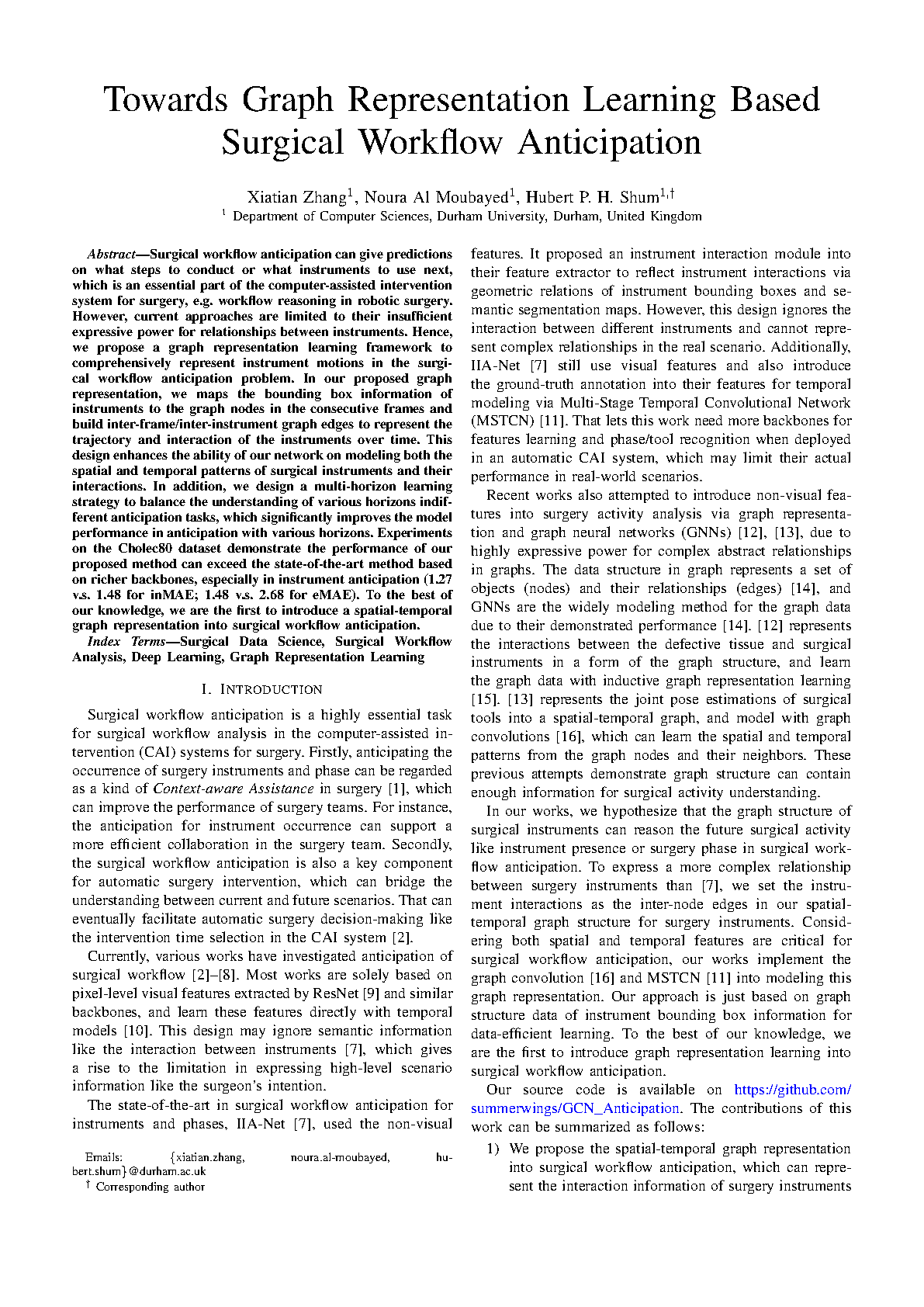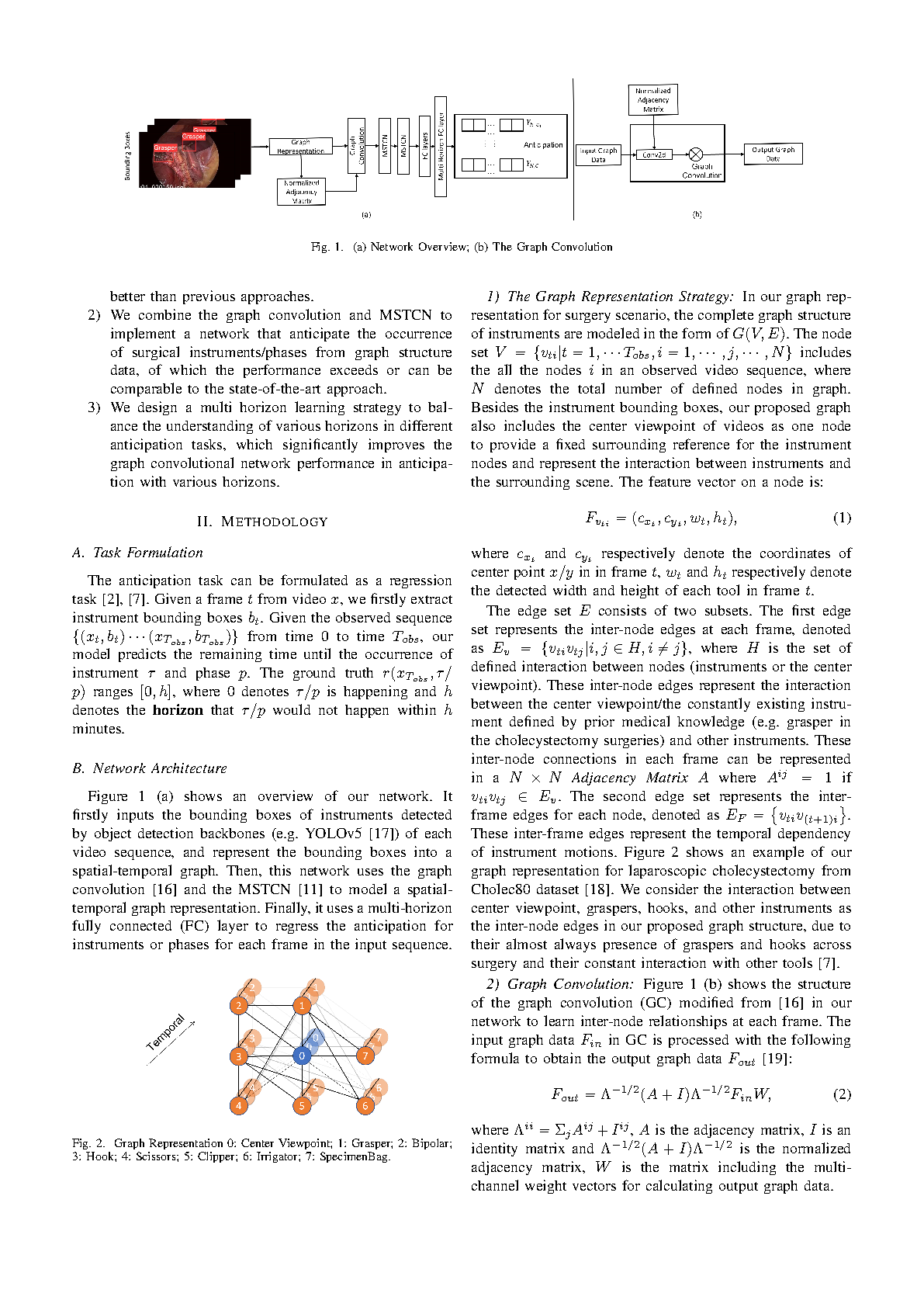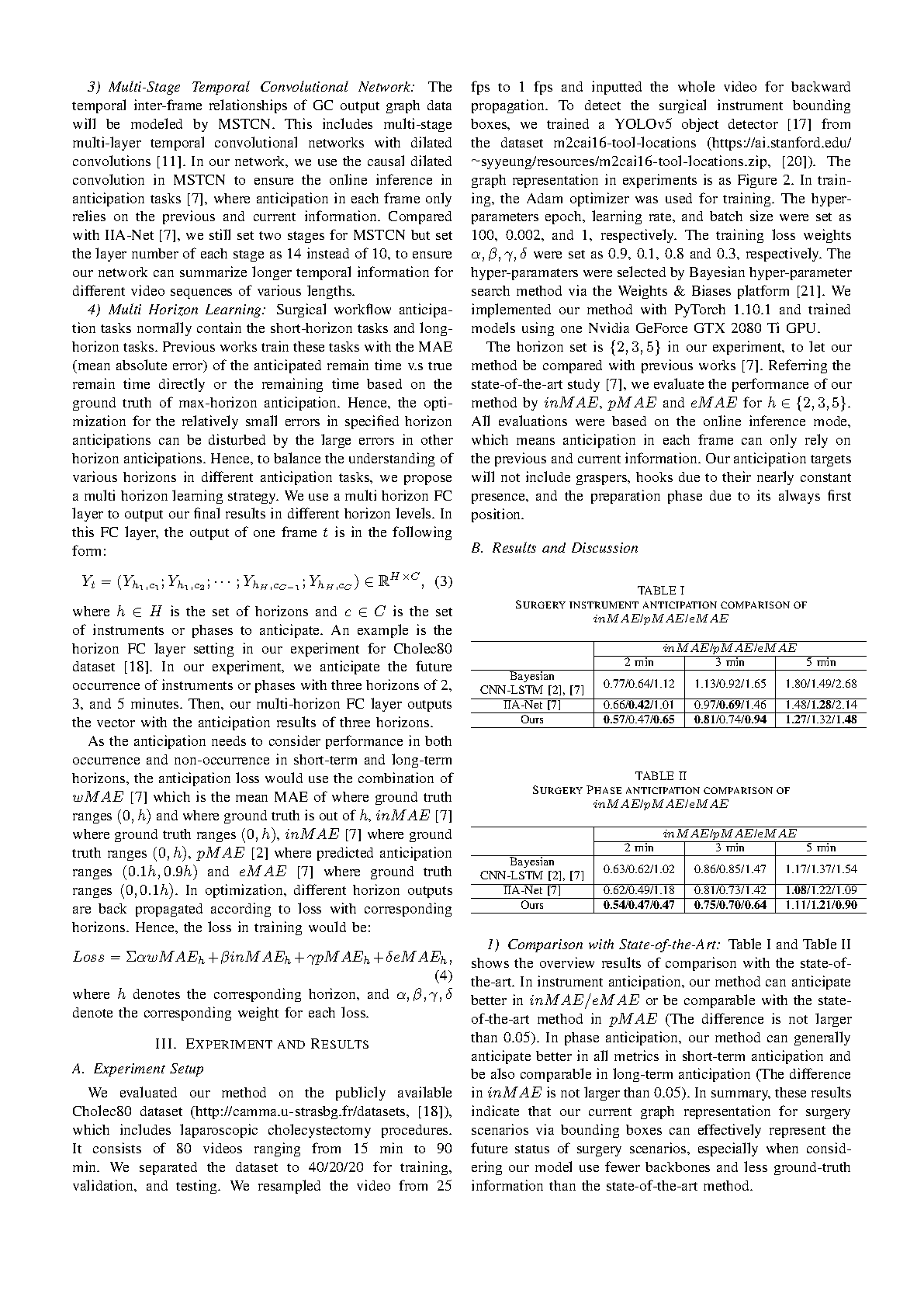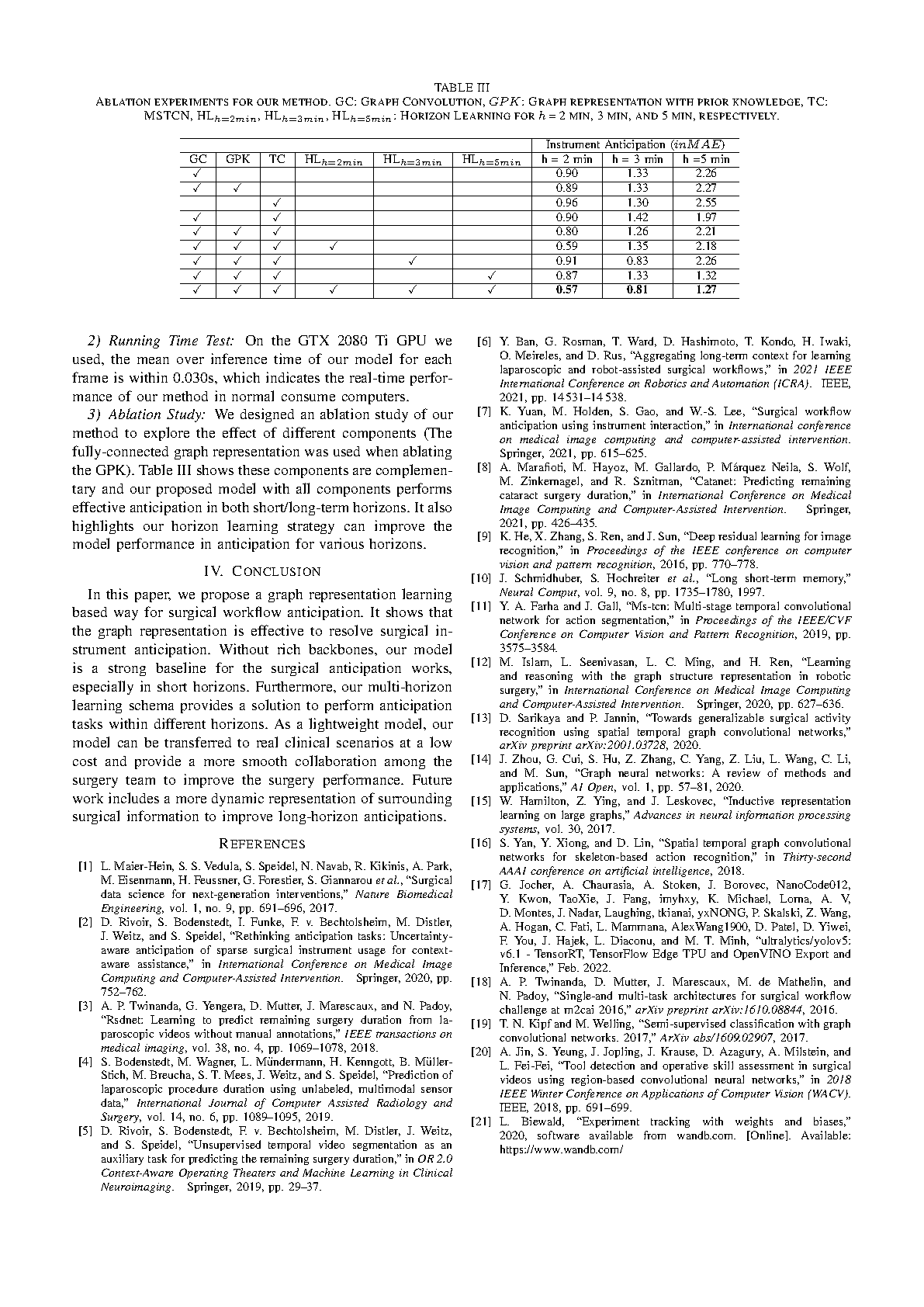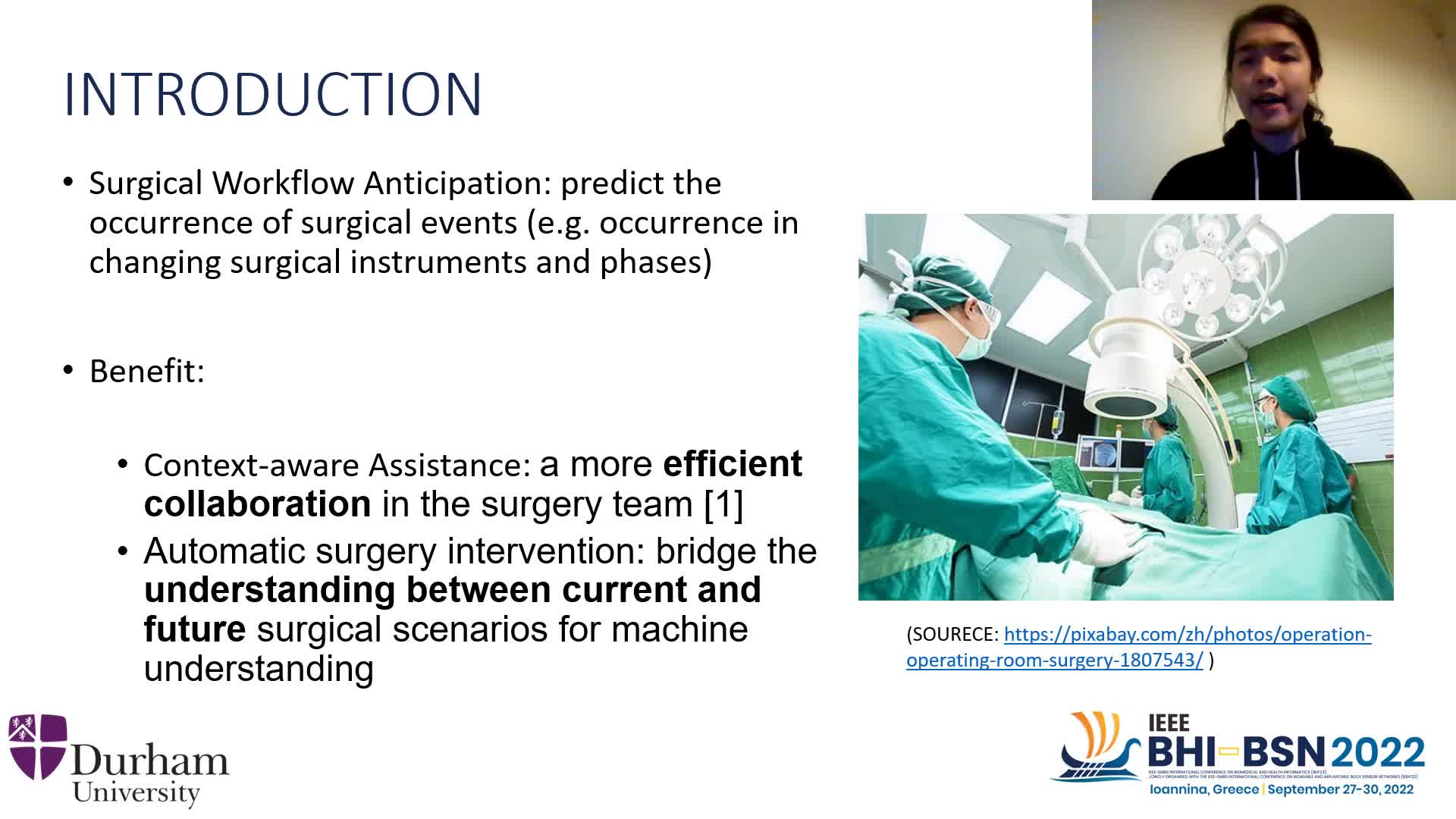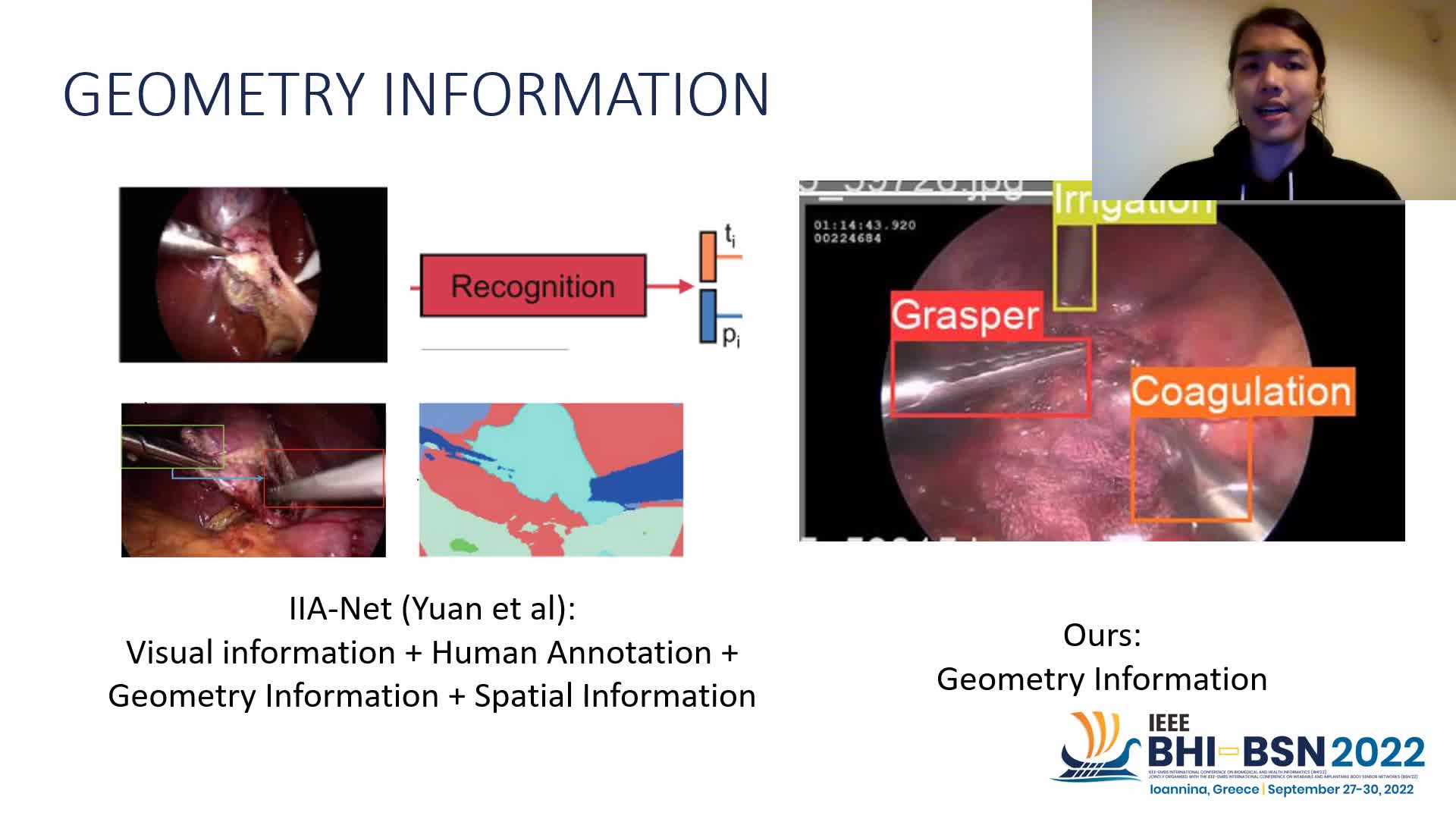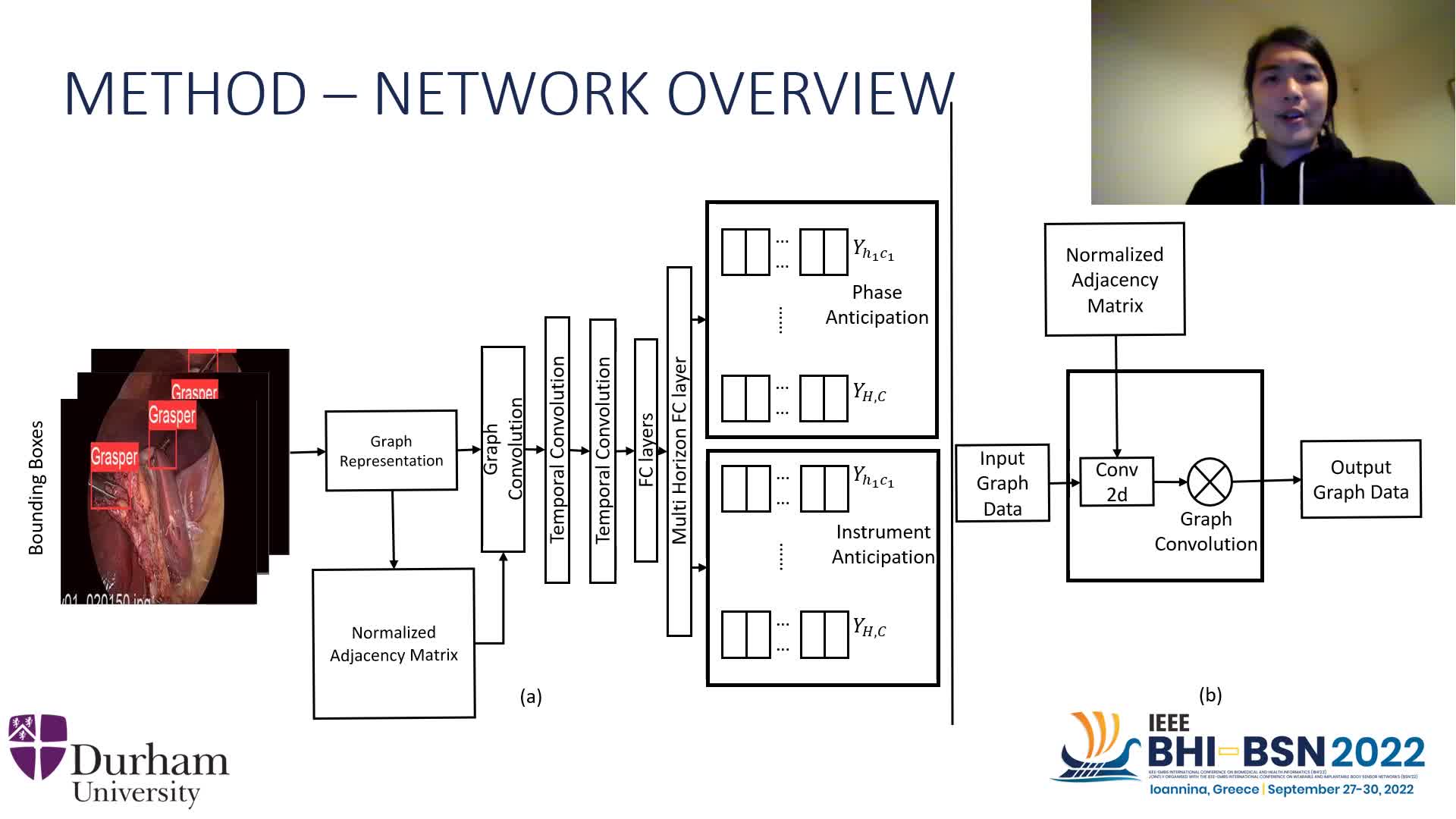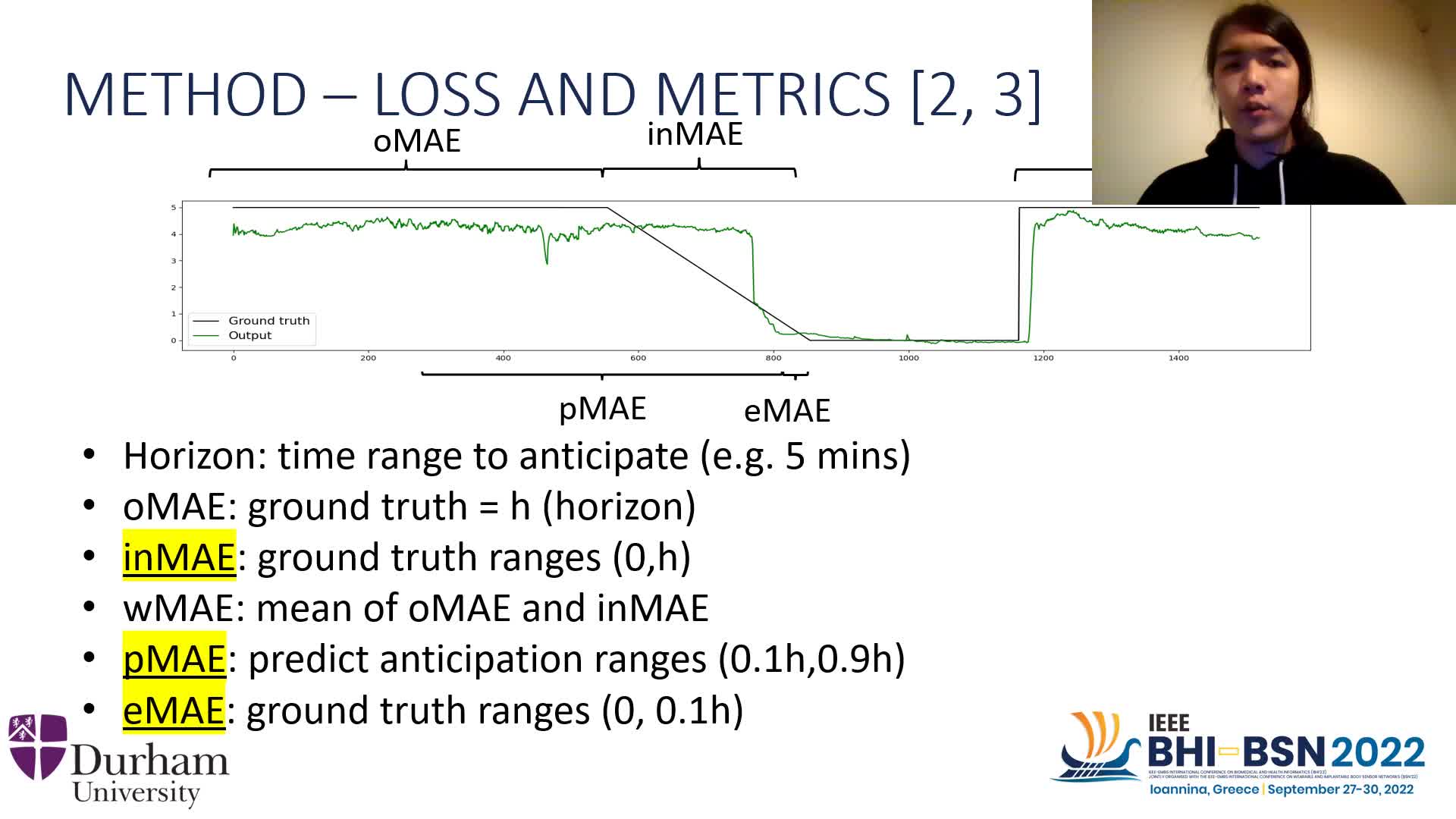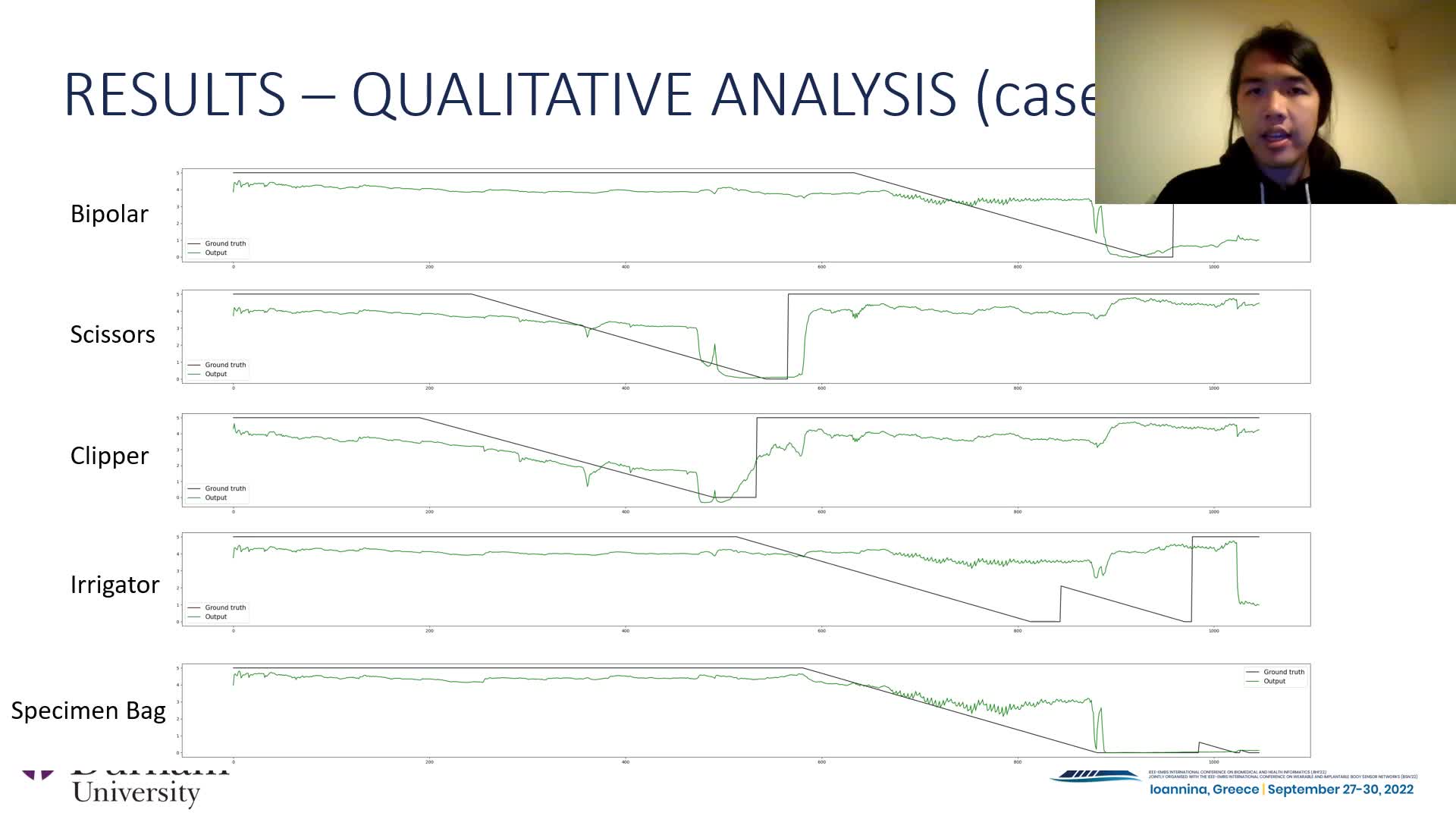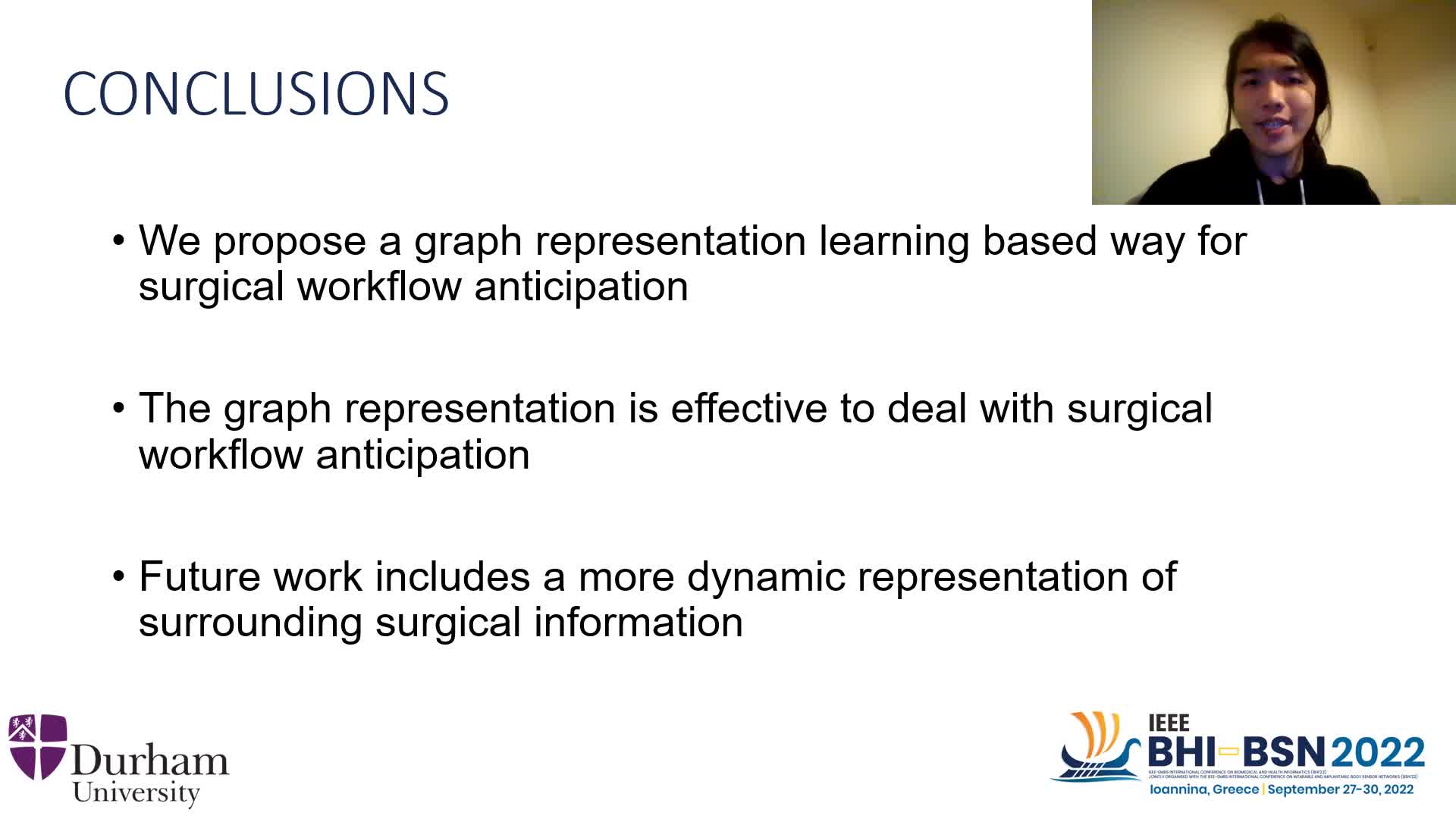Towards Graph Representation Learning Based Surgical Workflow Anticipation
Francis Xiatian Zhang, Noura Al Moubayed and Hubert P. H. Shum
Proceedings of the 2022 IEEE-EMBS International Conference on Biomedical and Health Informatics (BHI), 2022
Oral Paper

Abstract
Surgical workflow anticipation can give predictions on what steps to conduct or what instruments to use next, which is an essential part of the computer-assisted intervention system for surgery, e.g. workflow reasoning in robotic surgery. However, current approaches are limited to their insufficient expressive power for relationships between instruments. Hence, we propose a graph representation learning framework to comprehensively represent instrument motions in the surgical workflow anticipation problem. In our proposed graph representation, we maps the bounding box information of instruments to the graph nodes in the consecutive frames and build inter-frame/inter-instrument graph edges to represent the trajectory and interaction of the instruments over time. This design enhances the ability of our network on modeling both the spatial and temporal patterns of surgical instruments and their interactions. In addition, we design a multi-horizon learning strategy to balance the understanding of various horizons indifferent anticipation tasks, which significantly improves the model performance in anticipation with various horizons. Experiments on the Cholec80 dataset demonstrate the performance of our proposed method can exceed the state-of-the-art method based on richer backbones, especially in instrument anticipation (1.27 v.s. 1.48 for inMAE; 1.48 v.s. 2.68 for eMAE). To the best of our knowledge, we are the first to introduce a spatial-temporal graph representation into surgical workflow anticipation.
